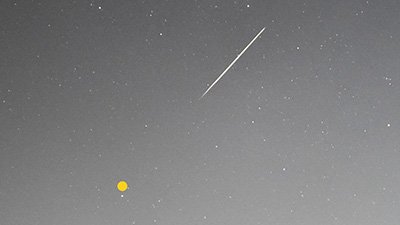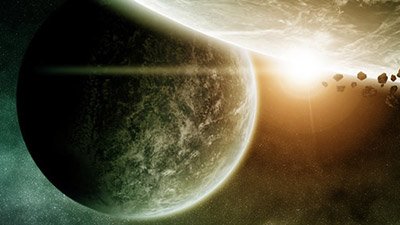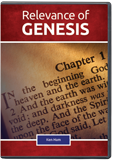
2020 Hindsight: The Astronomy Year in Review
Happy New Year! With COVID-19, 2020 was a weird year, a year many of us are glad to see go. Hopefully, 2021 will see the demise of COVID-19 and the many restrictions prompted by concerns about its spread, and so perhaps we soon can get back to normal. While COVID-19 dominated the headlines in 2020, there were other things going on last year. The beginning of the new year provides an opportunity to reflect on some of the stories that were prominent in astronomy in 2020.
The Great Conjunction
As 2020 ended, there was much buzz about “the great conjunction” of Jupiter and Saturn. A conjunction is when two astronomical bodies appear close together in the sky. For instance, each month the moon passes close to the sun in an event we call the new moon. But since the sun is so bright, we can’t see the conjunctions of the new moon, except when they happen to coincide with a solar eclipse. The moon also passes each of the five “naked eye” planets (they appear as bright stars) roughly each month. As the planets move along their orbits around the sun (and the earth moves in its orbit), the planets come into conjunction with various bright stars. The planets have mutual conjunctions as well. The rarest planetary conjunctions are those of Jupiter and Saturn. Jupiter and Saturn are in conjunction at roughly 20-year intervals. I’ve seen three conjunctions of Jupiter and Saturn: in 1980, 2000, and now in 2020. What made the 2020 conjunction unusual was how close the two planets appeared—only 1/10 degree. Such a close conjunction of Jupiter and Saturn had not been seen in nearly 800 years. In 2000 the two planets never were closer than 1.1 degrees, more than 10 times farther apart than in 2020.
Appearing so close together during their 2020 conjunction, one could see both Jupiter and Saturn through a telescope using moderately high power. Closest separation was at 8:30 a.m. EST on December 21. That evening the sky cleared long enough to see the conjunction, but I wasn’t able to get any photographs. However, the sky was much better on the previous night and the following night, when I managed to view both planets simultaneously through the telescope and get some photos (below).

Photo of Jupiter/Saturn conjunction taken on the evening of December 22, 2020, along with a jet and its contrail. Jupiter is the brighter star, and the fainter star next to it is Saturn.
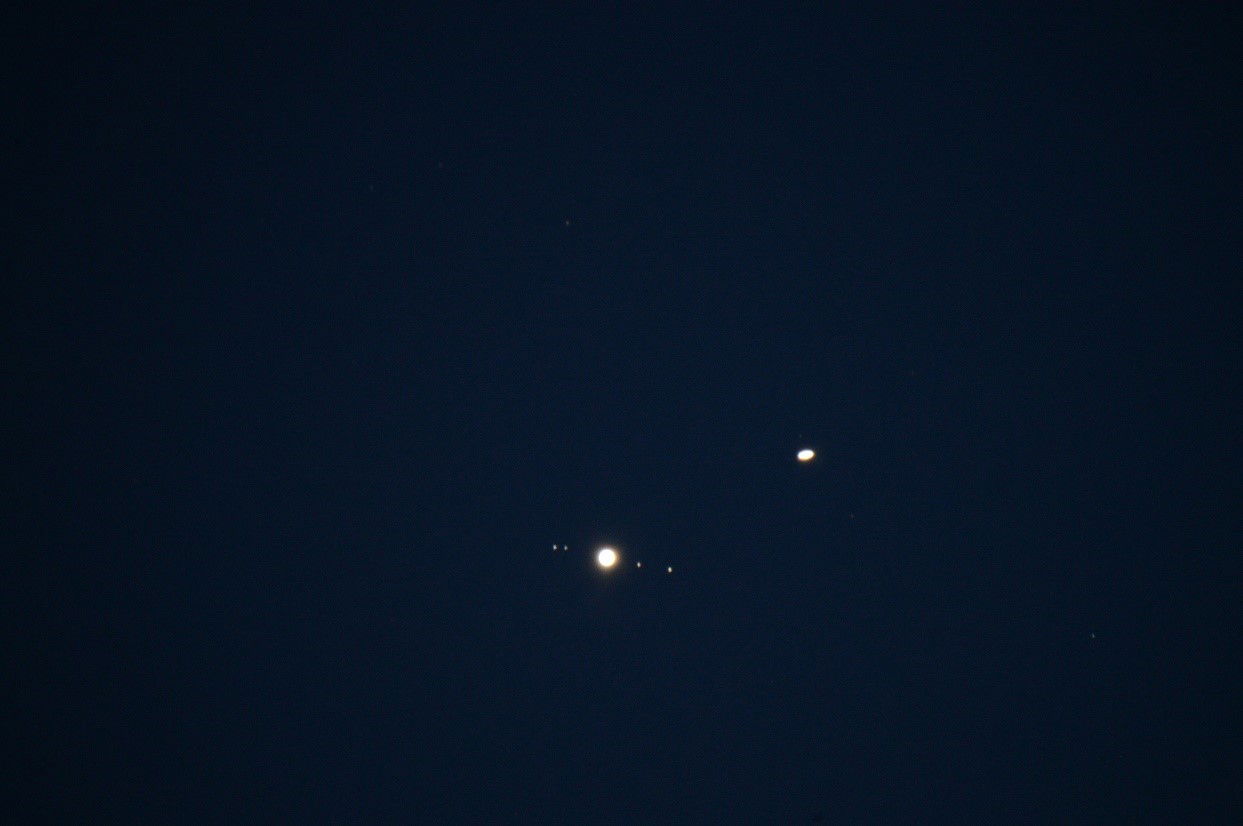
Photo of Jupiter and Saturn through a telescope. Both are overexposed to show the four Galilean satellites (moons) of Jupiter. Notice that Saturn’s rings have elongated Saturn’s image.
It didn’t matter too much, because the two were only marginally closer together on that middle night. It was a grand sight to see Saturn’s rings and the four Galilean satellites (or moons) of Jupiter at the same time through the telescope. Unfortunately, the planets were very low in the sky, so that turbulence in the earth’s atmosphere blurred the images quite a bit. We call how steady objects appear through a telescope seeing. Normally I can make out two dark bands on Jupiter, but the poor seeing during the conjunction viewing made that difficult.
Why was there so much hype about this conjunction? Planetary conjunctions are some of the most popular theories about the identity of the star that prompted the Magi to seek out the newborn King of the Jews (Matthew 2:1–12). One popular theory involves a triple conjunction (three passes back and forth over a few months) of Jupiter and Saturn in 7–6 BC. This explanation was a staple of planetarium shows in the 1970s and 1980s. About a dozen years ago another conjunction theory became popular. This newer theory proposes that the star that the Magi saw was a triple conjunction of Jupiter with the bright star Regulus in 3–2 BC, followed by a very close conjunction of Jupiter and Venus. Given the popularity of these conjunction theories, combined with the 2020 conjunction of Jupiter and Saturn occurring on the December solstice just four days before Christmas, this prompted news accounts of some sort of return of the original Christmas star. Upon hearing this, many people ignored the first part of the story and ran with the headline, leading them to expect some extremely bright star to appear in the sky the evening of December 21. I’m sure that many people who had clear skies that evening were disappointed. That is a pity because it prevented them from seeing a relatively rare, if less spectacular, celestial event.
I’m not a fan of any of the conjunction theories as to what the original Christmas star was. I’ve written an article critical of the more recent conjunction theory. We at Answers in Genesis don’t think that the description of the star found in Matthew 2:1-12 fits any known astronomical body and hence was a supernatural phenomenon.
The Fade and Return of Betelgeuse
In autumn 2019, the star Betelgeuse rapidly began to fade. Betelgeuse is a variable star, so its brightness changes slightly in what appears to be an erratic fashion. Betelgeuse’s variability isn’t quite random: it seems to vary over two and possibly three long periods simultaneously. These periods are hundreds of days in length. Betelgeuse usually is the brightest star in the constellation Orion, but its variations occasionally make Betelgeuse slightly fainter than Rigel, typically the second brightest star in Orion. However, Betelgeuse’s plunge in brightness late in 2019 was unprecedented. By early 2020, Betelgeuse had faded to levels no one living had ever seen, and there were no historical records of Betelgeuse being so faint. To people who are familiar with Orion’s appearance, the constellation looked very strange. Several other stars, such as the three making up Orion’s belt, appeared to have about the same brightness as Betelgeuse.
Most of the news reports about this odd behavior of Betelgeuse included mention that astronomers think it could be a precursor that Betelgeuse would soon blow up as a supernova. To most astronomers, “soon” means within 10,000 years. Astronomers who have studied Betelgeuse’s variability began to understand better what was going on and predicted that its fading would reverse in February 2020. Almost on cue, Betelgeuse began to brighten slightly in February, and it continued to brighten thereafter. I am pleased to report that Betelgeuse now has returned to its usual brightness and Orion appears normal once again. Still, I’d like to witness a supernova, from a safe distance, of course. Betelgeuse is far enough away that if it were to become a supernova, we would be treated to an astounding astrophysical event from a relatively safe distance.
A Bright Comet Graced the Sky
One of the big stories for stargazers in 2020 was Comet NEOWISE, the brightest comet in several years. I managed to see this comet in morning twilight on several mornings in early July. Within a week, Comet NEOWISE transitioned from morning twilight to evening twilight, and I managed to see it with the naked eye on several more evenings into mid-July, though it was fading rapidly as it climbed higher into the sky. I last saw Comet NEOWISE with binoculars while on my annual Grand Canyon raft trip a month later. I was able to take photographs of Comet NEOWISE on several mornings and evenings, and I even put some of them into a time-lapse video (below). The conditions were not ideal, and the camera bumped around a bit when taking the photos, so the video bounces around a bit.
Time-lapse on July 17, 2020
Time-lapse on July 24, 2020
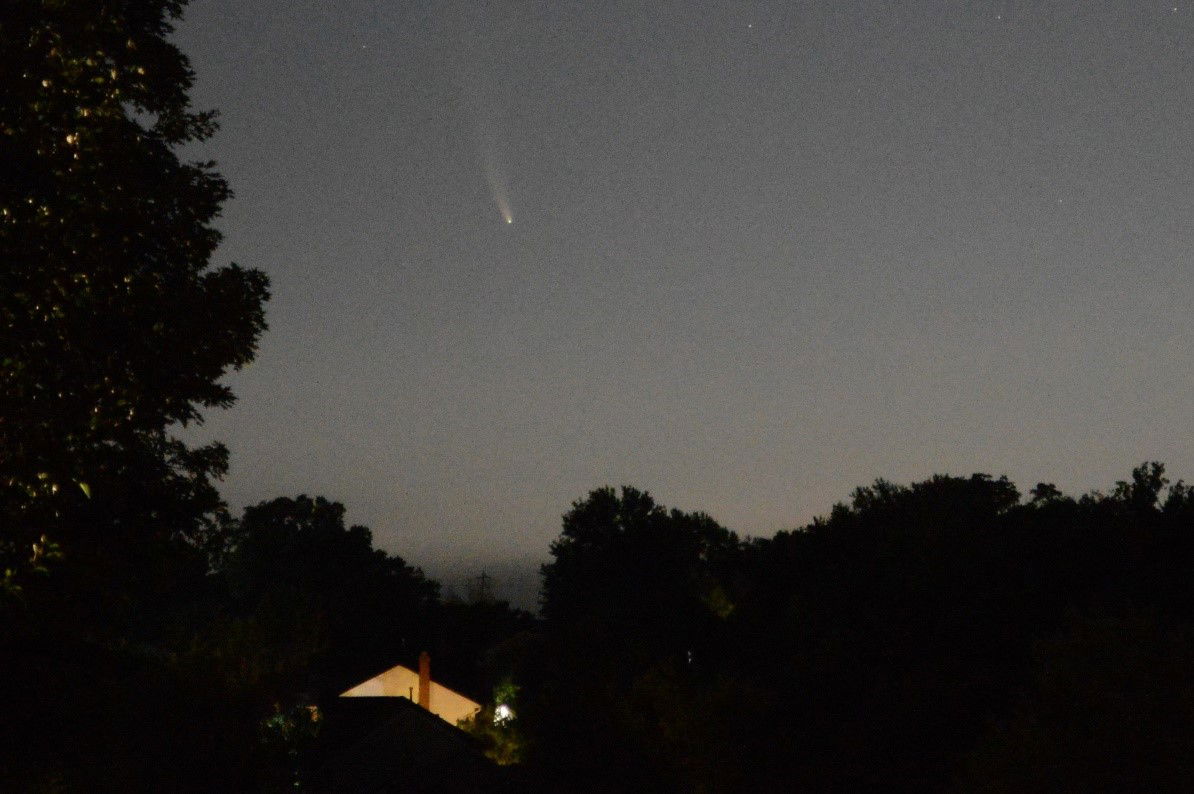
Photo of Comet NEOWISE taken on the morning of July 13, 2020
Literally a New Moon
In February astronomers announced that the earth had a new moon. This mini-moon, as the small asteroid 2020 CD3 came to be called, was discovered as it was temporarily orbiting the earth. The orbit of 2020CD3 is very chaotic. Therefore, it is not clear exactly when 2020CD3 began orbiting the earth (possibly in 2016 or 2017) or when it will escape earth orbit (apparently, it’s still orbiting the earth now). Even when it escapes the earth, 2020CD3 will return to our vicinity in years to come. Is there a chance of a collision with the earth in the future? Yes, but since 2020CD3 is about the size of a small car, a collision does not pose great risk.
New Earth-Like Planets?
Astronomers discovered the first exoplanets, planets orbiting other stars, more than 25 years ago. Since then, the number of known or suspected exoplanets has grown to more than 4,000. Every year at least a few new exoplanet discoveries are hailed as the latest earth-like planets, planets where life might exist. The year 2020 was no exception.
The first supposed earth-like planet discovered in 2020 was TOI 700d. TOI 700d is only 10–30% larger than the earth, but its mass, and hence composition, are unknown. Its relatively close orbital distance to its star suggests that TOI 700d may synchronously rotate, with one side perpetually facing its star and one side always in the dark and cold. That would not be good for living things. Then there is the instability of TOI 700, the star this planet orbits. This would cause wide swings in the temperature on the planet’s surface. Despite all these problems, evolutionists always approach such discoveries with much optimism.
There was even less hope for the two super-earths discovered orbiting the red dwarf star Gliese 887. Super-earths are planets larger than earth but smaller than the gas giant planets in the solar system. There were obvious problems with these two planets being capable of supporting life. These problems include orbiting too close to Gliese 887, the instability of Gliese 887, and the likelihood that these planets exhibit synchronous rotation too. Despite these problems, the hint on the part of the discoverers of these two exoplanets is the hope that there still might be a chance for life existing on at least one of these two planets. The best evidence is that none of the 4,000+ discovered exoplanets are hospitable to life. That is expected with the biblical creation model but not at all expected in the evolutionary worldview.
Superhabitable Planets
Speaking of the possibility of life on exoplanets, a study this past year attempted to quantify superhabitable planets. What is a superhabitable planet? A superhabitable planet is a planet where life is more probable than it is on earth. Since life exists on earth (indicating a probability of 100%), how can an exoplanet have a higher probability for life than earth? The authors of the study identified 24 planets that meet their criteria for being superhabitable, but they also stated that only two of their two dozen superhabitable planets are confirmed. That is, 22 of the 24 superhabitable planets may be false positives and hence may not even exist. It appears that astrobiology is far from an exact science.
Water on the Moon
In October, NASA announced that its Stratospheric Observatory For Infrared Astronomy (SOFIA) detected water in lunar soil on the sunlit side of the moon. Previously, astronomers had found water in the floors of craters in the moon’s polar regions that are perpetually in shadow. However, it had long been thought that water could not exist where sunlight shines on the lunar surface for much of the two-week-long lunar day. Keep in mind that this water is in extremely low concentration. The samples brought back by Apollo astronauts didn’t seem to have any water, but that may have been more a function of the inability to detect water at such low concentration at the time. It’s not clear what form this water on the moon is or how the water got there. It also isn’t clear whether this story has any bearing on the question of the moon’s age (billions of years versus thousands of years).
Is the Cosmological Principle in Trouble?
The foundation of modern cosmology is the cosmological principle, the assumption that the universe is homogeneous and isotropic. Homogeneity means that the universe looks the same at all locations, and isotropy means that the universe looks the same in all directions. There are reasons to doubt that the universe is homogeneous and isotropic. For instance, galaxies tend to clump together into clusters, and clusters of galaxies in turn appear to clump together in networks of sheets and filaments. For a long time, it was assumed that this clumping would smooth out at the grandest scales in the universe, but the evidence says otherwise, indicating that the universe may not be homogeneous. Meanwhile, the Axis of Evil and other factors suggest that the universe may not be isotropic.
In the spring, a study of hundreds of galaxy clusters again called into question whether the universe is isotropic. Galaxy clusters are filled with diffuse high-temperature gas. This gas emits X-rays that X-ray telescopes orbiting the earth can detect. Astronomers measure both the temperature of the gas and the X-ray luminosity of galaxy clusters, and they have found a correlation between the two. However, this new study has found that many clusters depart from the X-ray temperature and luminosity relationship and that these departures depend upon the location of galaxy clusters in the sky. If the results of this study hold up, then the universe is not isotropic. Few astronomers and cosmologists are likely to embrace this result because of the cosmological implications. If the cosmological principle is not true, all of cosmology of the past century, and especially the big bang model, would be undermined.
Rapid Formation of Pluto
The New Horizons mission to Pluto stunned the astronomical world in 2015. Most astronomers expected the Plutonian surface to be heavily cratered, but New Horizons showed that while portions of Pluto’s surface are heavily cratered, other portions have very few craters. This suggests that Pluto recently has been geologically active. This was totally unexpected if Pluto were billions of years old but what we would expect if Pluto were far younger. Evolutionary scientists have been puzzling ever since how to explain this.
A study presented at a science meeting in March further complicated the issue. This study suggested that Pluto once had a subsurface ocean that froze. The study also suggested that it took less than 30,000 years for Pluto to form. This upper limit is consistent with the creation model, but it is incredibly short in an evolutionary worldview. This was welcome news for creationists.
The Collapse of the Arecibo Radio Telescope
In November, the Arecibo Radio Telescope collapsed. Constructed in the early 1960s, Arecibo was the largest telescope in the world until 2015. The 1000-foot dish was built into a natural depression on top of a mountain. Since the telescope was fixed to the earth, it could not be steered, so it had a limited range of the sky that it could observe. Nevertheless, observations made with the Arecibo telescope made many contributions to a wide range of areas of astronomy. In recent years the telescope had suffered damage from hurricanes, an earthquake, and age. There were plans to repair wear and damage when a sizeable portion of the structure collapsed. Currently there are no plans for repair or replacement.
This was not the first collapse of a radio telescope. In 1961, the National Radio Astronomy Observatory opened in Green Bank, West Virginia. This telescope had a steerable dish nearly 300 feet across. In November 1988, this telescope unexpectedly collapsed while astronomers were making observations. More than a dozen years later a slightly larger and much-improved replacement radio telescope went into operation. So, perhaps there is hope that the Arecibo telescope may eventually be replaced too.
China Is on the Rise and It’ s Marching on to Mars!
For years China has been working to establish itself as a world power. This includes space. In recent years, China has been launching satellites and space probes, including a few to the moon. For instance, two years ago a Chinese rover landed on the far side of the moon. On December 1, 2020, a Chinese spacecraft landed on the moon and two weeks later returned a 2-kilogram sample of lunar soil to the earth. This was the first lunar sample brought to earth since the Apollo program a half-century ago. China also sent a probe to Mars in July 2020. There is a narrow launch window to Mars every 26 months, so China took advantage of that opportunity to send a probe to Mars. But China was not alone: The United Arab Emirates sent a probe, as did the United States once again. The US Perseverance rover is accompanied by the Ingenuity helicopter and will explore Mars from low altitude, a first. These spacecrafts will not reach Mars until early 2021.
And the Winners Are . . .
The 2020 Nobel Prize in Physics was awarded to three people who work on topics deeply related to astronomy. Roger Penrose received half the prize for his work with black holes and general relativity. Andrea Ghez and Reinhard Genzel shared the other half for their work in establishing the existence of a supermassive black hole at the center of the Milky Way Galaxy. This is the ninth time that a Noble Prize in Physics has recognized work in the field of astronomy.
Sunspot Cycle Number 25 Began
In September, a group of solar astronomers decided that sunspot activity reached a minimum in December 2019, ending Solar Cycle 24 and ushering in Solar Cycle 25. They also predicted that this Solar Cycle probably will be more active than Solar Cycle 24 and that the next sunspot maximum likely will be in July 2025. This is good news. A few years ago, here at the Creation Museum we launched a sunspot-observation program for guests to view sunspots and perhaps prominences through telescopes. For the first couple of years this went well. But then sunspot minimum came, and since on most days there were no sunspots, we cancelled the program for a while. Then there was COVID-19, which closed most of our special programs at the Creation Museum in 2020. I don’t expect sunspot numbers to improve much this year, but in 2022 there probably will be plenty of spots again.
Conclusion
What will 2021 bring? Will the sun surprise us with sunspots a bit early? Perhaps. Will there be another unexpected comet, or will a bright star once again do something unusual, or might we see a supernova? Probably not. We can’t predict such things anymore than we can anticipate many of the new studies related to astronomy that are sure to appear in 2021. We’ll just have to wait and see. Of course we can predict that more exoplanets will be touted as being capable of supporting life on flimsy or no empirical evidence—since this happens every year. As new things arise in the world of astronomy, I’ll continue to comment about their significance in articles and blogs here on the Answers in Genesis website.
Recommended Resources

Answers in Genesis is an apologetics ministry, dedicated to helping Christians defend their faith and proclaim the good news of Jesus Christ.
- Customer Service 800.778.3390
- © 2024 Answers in Genesis

